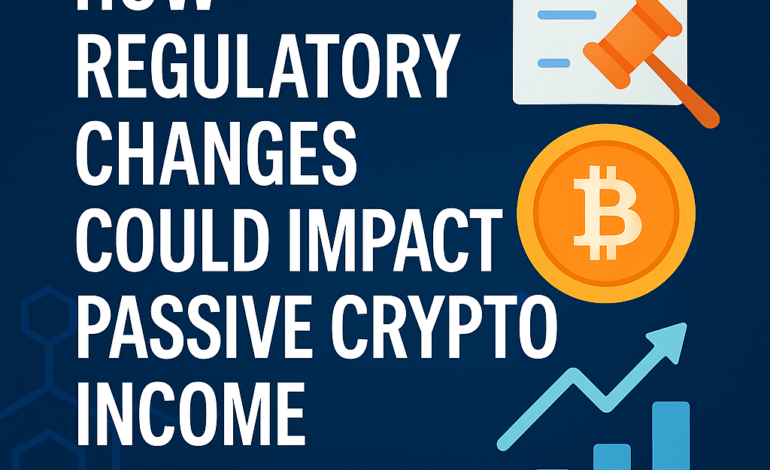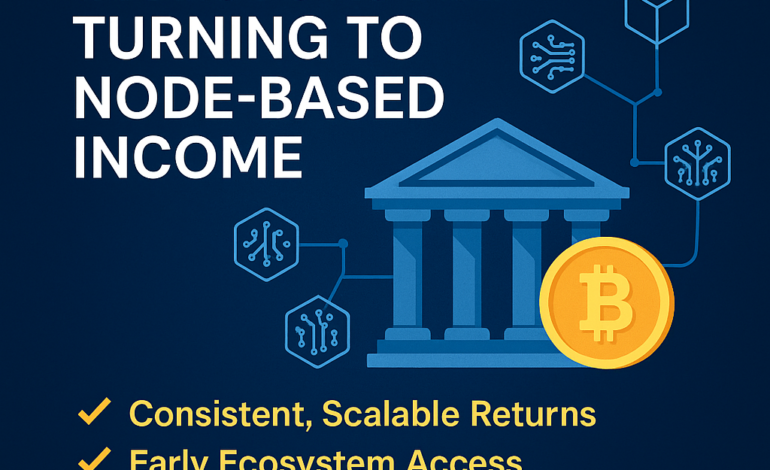As the crypto world continues to mature in 2025, investors and enthusiasts are looking for smarter ways to earn passive income. Two of the most popular methods are running a node and staking crypto assets — but which one is more profitable?
Both options allow you to support a blockchain network and get rewarded for your participation, but the requirements, risks, and ROI can be quite different. Let’s break down both strategies to help you decide which one fits your goals.

What Is Crypto Staking?
Crypto staking is the process of locking up your cryptocurrency to support the operations of a blockchain network that uses a Proof-of-Stake (PoS) or Delegated Proof-of-Stake (DPoS) consensus mechanism. In return, stakers earn rewards — typically in the form of new tokens or transaction fees.
Popular staking coins: Ethereum (ETH), Solana (SOL), Cardano (ADA), Polkadot (DOT)
Benefits of staking:
- Low technical barrier (can stake from wallets or exchanges)
- Consistent, predictable rewards
- Lower hardware requirements
What Does It Mean to Run a Node?
Running a node, especially a validator or full node, involves maintaining a copy of the blockchain and participating in consensus by validating transactions and creating new blocks. It’s a more active and infrastructure-heavy role than staking.
Popular node networks: Ethereum, Avalanche, Chainlink, Flux, StrongBlock
Benefits of running a node:
- Higher earning potential (especially for early node adopters)
- Direct contribution to network security and decentralization
- Sometimes grants governance or other privileges
Profitability Comparison: Node vs. Staking
| Factor | Staking | Running a Node |
|---|---|---|
| Initial Investment | Low to Medium | Medium to High |
| Technical Setup | Easy (can use exchanges or wallets) | Requires hardware & uptime management |
| Ongoing Costs | Minimal | Electricity, hosting, maintenance |
| Risk Level | Low to Moderate | Moderate to High |
| Average ROI (2025) | 5% – 12% annually | 10% – 35% (varies by project) |
| Liquidity | Often requires lock-up period | Capital locked in hardware or native tokens |
| Control | Delegated or custodial options available | Full control, but requires responsibility |
Which Is Better for You?
Choose Staking If:
- You want low-effort passive income
- You lack the technical skills to run a server or node
- You prefer liquidity and simplicity
- You’re looking to diversify income without high risk
Choose Running a Node If:
- You want higher ROI potential
- You have the technical skills (or are willing to learn)
- You’re investing in node-based networks early on
- You want long-term network participation and governance power
Real-World Examples
- Ethereum Staking: Average APR is around 4–6%, but with liquid staking protocols (e.g., Lido), you maintain token liquidity
- Flux Nodes: Requires specific hardware and collateral; yields can be 15–30% depending on network load and node tier
- StrongBlock (Legacy Model): Previously offered high rewards, but sustainability was a challenge due to tokenomics
Things to Consider Before Choosing
- Tokenomics – Are rewards inflationary or based on fees?
- Sustainability – Can the project maintain rewards long term?
- Security – Running a node comes with more exposure to risks like hacks or downtime penalties
- Regulatory Compliance – Some countries are beginning to regulate staking and node rewards differently
- Network Maturity – Newer networks may offer better yields but come with more risk
Final Thoughts
Both staking and running a node can be powerful tools for earning passive crypto income, but the better option depends on your capital, risk tolerance, and technical capabilities
Staking is ideal for those who want simplicity and reliability, while running a node is best suited for those looking for higher returns and deeper involvement in the blockchain ecosystem
By analyzing your goals and the networks you’re interested in, you can make a smart choice that earns you long-term rewards in the crypto economy




